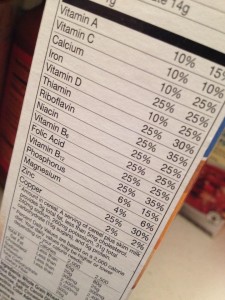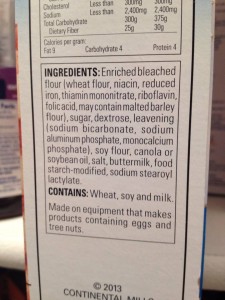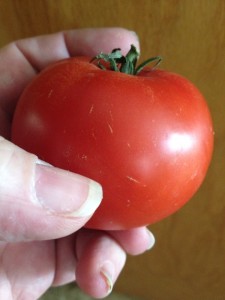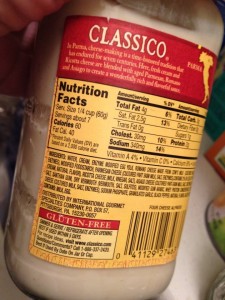I hate being manipulated. The only other thing that gets my blood pressure up faster is being bullied, and the current state of food marketing and labeling employs both tactics with a vicious force that has destroyed our health and endangered the health of our children, grandchildren and beyond. Do I sound angry? Good, because the more I am exposed to the way food is made available to us, the angrier I become. I’ve been a proponent of eating real food in the style of Michael Pollan (In Defense of Food) and I try to follow his guiding principle that if your grandmother wouldn’t recognize the ingredients, then it is not real food. Our bodies are only nourished by real food, not their chemical counterparts.
Real food is the stuff that grows in and on the earth, not in a laboratory. The health of the body and the mind is intimately tied to eating food that has been grown and minimally processed. And while I would love to say that I eat no processed food that is not the case. I am a terrible bread baker and while I’ve made things like crackers and ice cream, those are items are easier and often better purchased. Trying to make these purchases in a healthy way is when I feel manipulated.
 I would bet that many of you are pretty adept at reading the nutrition facts that are on the back of a package—carbs, fats, fiber etc.— this is where I started my evaluation of whether this food was worth my hard earned money. Unfortunately, labeling is where food companies have been granted a free pass to manipulate us into thinking that we are eating real food when that may not be the case.
I would bet that many of you are pretty adept at reading the nutrition facts that are on the back of a package—carbs, fats, fiber etc.— this is where I started my evaluation of whether this food was worth my hard earned money. Unfortunately, labeling is where food companies have been granted a free pass to manipulate us into thinking that we are eating real food when that may not be the case.
For example, fiber is incredibly important to creating a healthy gut, and protects against high cholesterol and heart disease. The bacteria in our intestines thrive on lots of fiber, our blood sugar can be better maintained when consuming high fiber meals and the efficiency of one’s elimination habits is strongly influenced by the amount of fiber consumed. So if we were to look at the nutrition labels, we may see that a box of cookies or crackers is labeled high in fiber—good news! Cookies plus fiber, how lucky are we?!
 But here is the rub: food companies are allowed to include things like polydextrose— a synthesized carbohydrate—in the amount of grams of fiber. Substances like polydextrose were created to bulk up food without adding calories. Cocoa Pebbles used this approach in order to say their cereal is healthy, and while they have since removed the polydextrose when questioned about the practice, many other foodstuffs still harbor this pretender. There is no evidence that substances like this have any healthy effect on the body and those looking for ways to add fiber to their diet are being mislead (or lied to if I wanted to be critical).
But here is the rub: food companies are allowed to include things like polydextrose— a synthesized carbohydrate—in the amount of grams of fiber. Substances like polydextrose were created to bulk up food without adding calories. Cocoa Pebbles used this approach in order to say their cereal is healthy, and while they have since removed the polydextrose when questioned about the practice, many other foodstuffs still harbor this pretender. There is no evidence that substances like this have any healthy effect on the body and those looking for ways to add fiber to their diet are being mislead (or lied to if I wanted to be critical).
Fiber isn’t the only area where food companies manipulate data to make their products seem healthy. The way trans fats, also known as hydrogenated fat, are deceptively listed in the nutrition information portion of packaging to make you think you not are consuming any trans fats! Trans fats are created through an industrial process of adding hydrogen to vegetable oil and this allows the oil to solidify at room temperature, giving it a considerably longer shelf life. Trans fats create havoc with your cholesterol and most food agencies agree that trans fats are bad for you in any amount and should be phased out of the food supply.
 However, even though we know this substance is bad for us, the government is allowing food manufactures to mislabel their products by saying that a serving has 0 trans fats when in reality they may have as much as .5 grams. This may seem like a small amount when found in cookies and crackers, but who actually eats a single serving? If you regularly eat 3 or 4 servings of manufactured cookies or crackers, you would actually be consuming 1.5-2 grams of trans fats—.
However, even though we know this substance is bad for us, the government is allowing food manufactures to mislabel their products by saying that a serving has 0 trans fats when in reality they may have as much as .5 grams. This may seem like a small amount when found in cookies and crackers, but who actually eats a single serving? If you regularly eat 3 or 4 servings of manufactured cookies or crackers, you would actually be consuming 1.5-2 grams of trans fats—.
You may be an otherwise healthy person who is not concerned about a little trans fat your diet, but think about it this way: if food labeling can legally lie to you about the amount of trans fats they inject into your food, what else are they lying to you about? This is what chaps my hide. I cannot read the nutrition labeling on food and get the whole story. I have to put on my reading glasses and find the ridiculously small print that list the ingredients and look for what might be hiding behind the ‘high fiber’ or ‘healthy food’ descriptor.
 Companies should be able to create their product the best way they see fit (within certain guidelines of course) and offer it for sale; they should not be able to manipulate and obfuscate the ingredients or the method of manufacturing of that product. I don’t want to pull out my chemistry text book in order to read a food label, and that is why I fall back on Michael Pollan’s adage that if my grandmother wouldn’t recognize the ingredients, then its not real food and is likely to cause more harm than good.
Companies should be able to create their product the best way they see fit (within certain guidelines of course) and offer it for sale; they should not be able to manipulate and obfuscate the ingredients or the method of manufacturing of that product. I don’t want to pull out my chemistry text book in order to read a food label, and that is why I fall back on Michael Pollan’s adage that if my grandmother wouldn’t recognize the ingredients, then its not real food and is likely to cause more harm than good.
Virginia is co-owner of Class: The Body Pastiche





